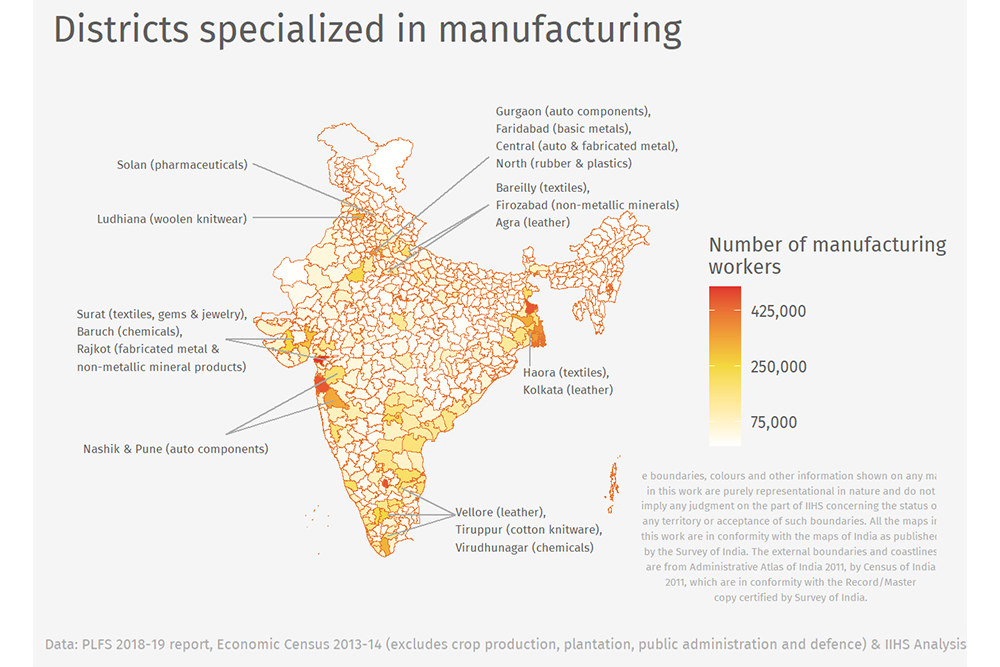Manufacturing Is Concentrated In A Few Districts
The MSME ministry's cluster development programme of 1998, further revamped in October 2007, plays a vital role in transforming certain districts into specialised manufacturing centres.

Manufacturing accounts for 21% of the total non-agricultural employment in India but manufacturing hubs are concentrated in a few regions like the western and south-eastern coast, with a few pockets in the north. The cluster development programme initiated by the micro, small and medium enterprise (MSME) ministry in 1998, and further revamped in October 2007, plays a vital role in transforming certain districts into specialised manufacturing centres.
The Economic Census data allow us to look at specialised industries and the employment they generate across India. For example, 42% of non-farm jobs in Surat are in the manufacture of textiles, gems and jewellery. Apparels and textiles manufacturing account for 30% of non-farm jobs in Tiruppur and 20% in Ludhiana. Similarly, 47% of the non-farm jobs in Firozabad are in the manufacture of non-metallic mineral products such as cement, ceramics and glass.
But despite this push afforded by the cluster development programme, manufacturing in India has shown a declining trend since 2011. Creating more of these specialised manufacturing hubs can lead to broad-based job creation as well as economic benefits. It is also important to note here that millions of workers in the manufacturing sector are grappling with low wages and lack of job security. Contractual employment has been on the rise since the 2000s, thereby excluding a vast workforce from the benefits enshrined in labour laws. Any attempt at reviving manufacturing employment needs to be cognisant of these trends.
The author acknowledges the contribution of Divij Sinha, IIHS Urban Informatics Lab, who helped with data visualisation.
Here are other DataViz of the series:
How Non-Agricultural Workers Are Spread Out Across The Country
More Services Sector Jobs In Cities
Construction Absorbs Low-Skilled Casual Labour?
MSMEs As Large Employment Creators
We welcome feedback. Please write to respond@indiaspend.org. We reserve the right to edit responses for language and grammar.


